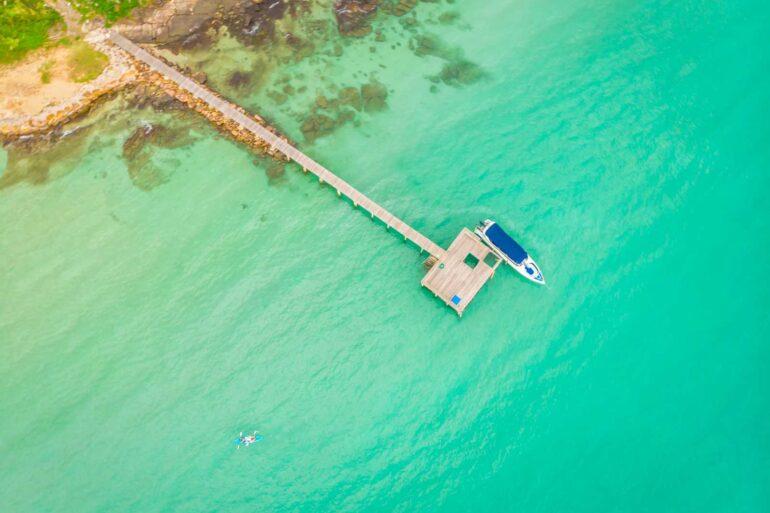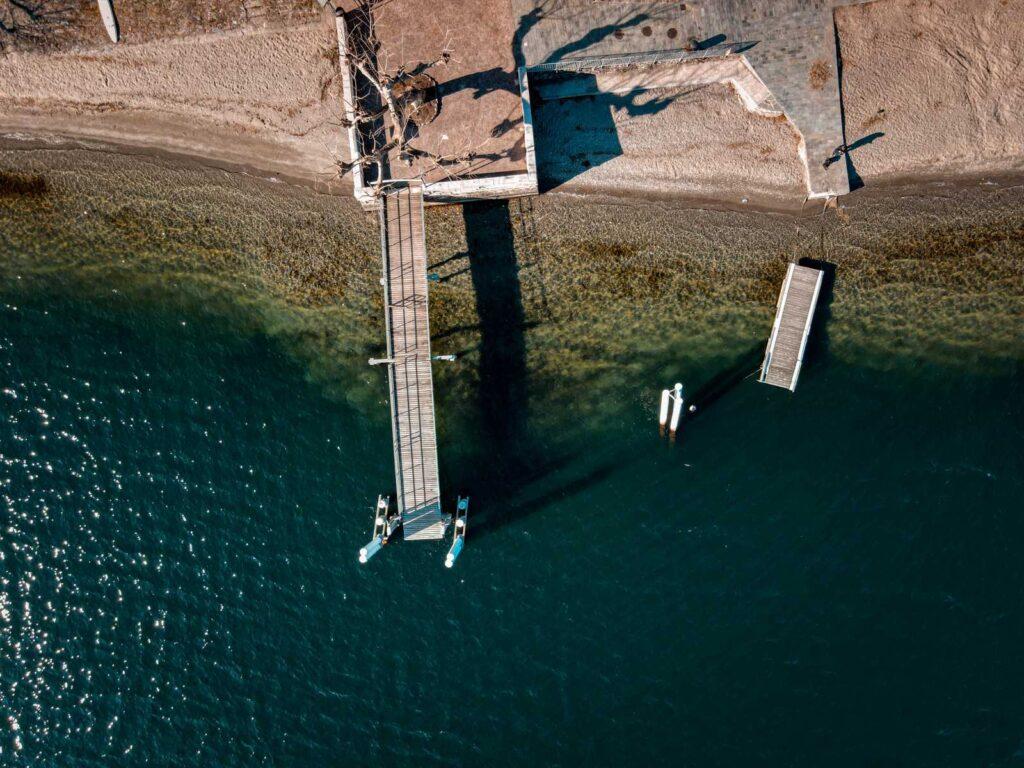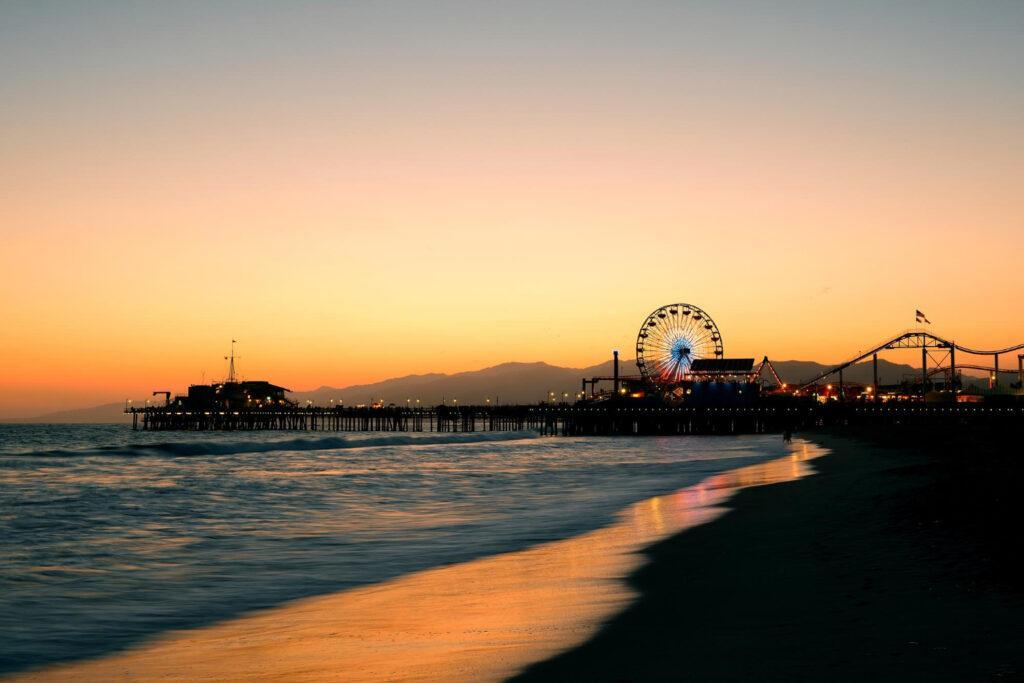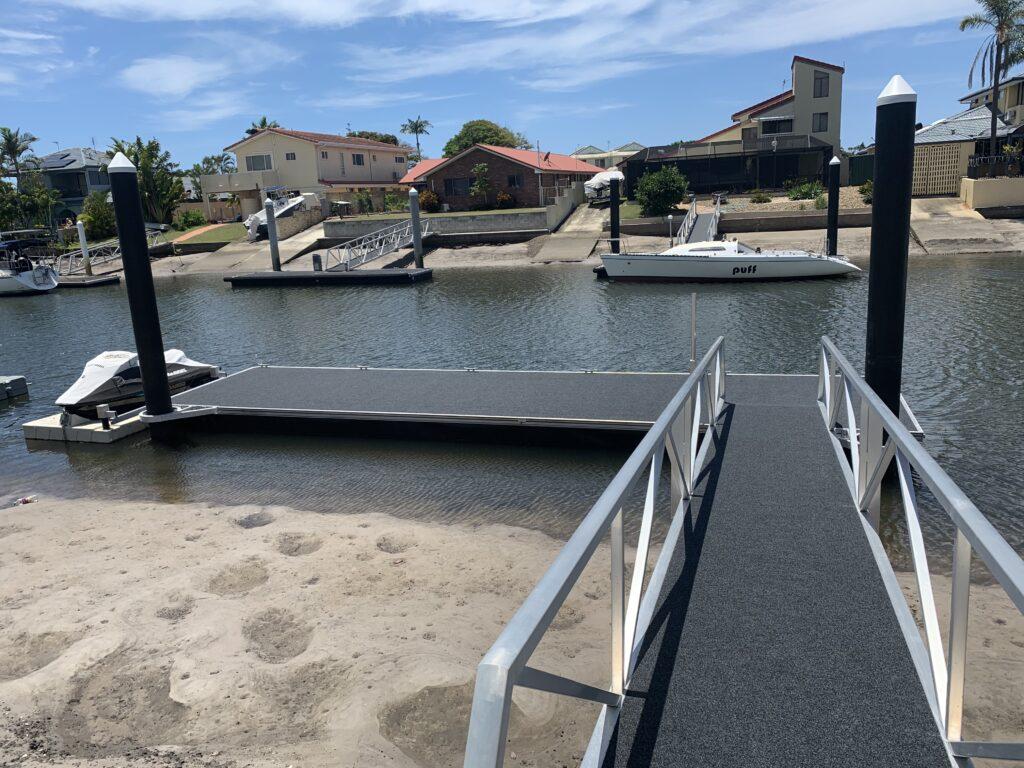
As the owner of Micks Marine Maintenance, I’ve seen a lot of docks and pontoons in my time. From primitive jetties to modern pontoon docks and gangways, it’s incredible to see how far boat dock technology has come over the years.
In this article, I’m going to take you through the history of boat docks, from their humble beginnings until today.
We’ll look at some of the key developments that have been made along the way. We’ll also include some interesting facts about each type of dock. So if you’re curious about how we got from primitive jetties to modern pontoon docks and gangways, read on!
Jetties

Jetties are one of the oldest forms of boat dock technology in existence. In fact, jetties are believed to be some of the first structures built into bodies of water specifically for loading and unloading boats. The earliest jetties were typically made from materials like wood or stone and were commonly used in ancient ports and harbours.
Despite their age, jetties are still very popular today, especially in South East Queensland, where our team at Mick’s Marine Maintenance regularly repairs and maintains them.
Records indicate that jetties were present in some of the earliest civilisations, and they might have been around since the 4th century BCE. To this day, they remain a cost-effective solution for people looking to get the most out of their waterfront property.
Wharves
Wharves are an evolution from primitive jetties, as they were designed to be more durable and handle more traffic. As trade and transportation changed, it became clear that docks needed to get bigger and better. This led to the creation of wharves. These docks were typically longer and wider than jetties and were often built using harder materials like brick or concrete.
Wharves were also used to build piers, which let boats dock in deeper water instead of having to deal with shallow shorelines like jetties.
It is thought that wharves and similar boat docks were innovated during the Middle Ages, though no concrete date can be established. Even now, commercial fishermen and charter operators who need a strong and reliable dock structure for their boats still like wharves.
Piers

Piers were another type of boat dock that emerged during this period. These were often used for recreational purposes and were typically built with wood or concrete. The first pilings were developed in the 19th century, but they quickly gained popularity. By the early 20th century, they had become a common sight along coastlines all over the world.
Piers are still popular to this day, and their popularity is only increasing as the need for space in the water increases. Piers offer an excellent way for people to get out onto the water without having to buy or rent a boat. They also provide plenty of recreational activities like fishing, swimming, or simply enjoying the view.
Floating docks
Floating docks are a relatively new type of boat dock technology that emerged in the late 19th and early 20th centuries. These boat docks were typically made from wood or metal and were supported by floats or barrels that kept them afloat. This revolutionised boat dock technology, making it possible for boats to be docked in deeper waters.
Today, floating docks are used all over the world, from small docks for recreation to large docks for businesses. They provide an efficient way for boats and ships to load and unload their cargo and a cost-effective solution for people looking to get out on the water.
Pontoon docks

In the mid-20th century, pontoon docks, also known as concrete docks, began to be used more commonly. These are often built with reinforced concrete and can be used for both commercial and recreational purposes. Pontoon docks are still prevalent today, as they offer a reliable and cost-effective solution for anyone looking to get out on the water.
At Micks Marine Maintenance, we understand the importance of reliable and durable boat docks. That’s why we always use high-quality aluminium when building new boat docks for our customers. We believe this is the best way to ensure that your dock can withstand most of the conditions encountered in South East Queensland and Northern NSW.
Modular docks
Pontoon docks became more popular in the late 20th and early 21st centuries, particularly in the USA. These are made up of a series of interconnected floating modules and are typically made of aluminium or other lightweight materials. They are not so prevalent in Australia, as pontoon docks are better suited for Australian waters. However, this doesn’t mean modular docks can’t be used in Australia, as they offer a unique solution for those looking for an efficient, cost-effective and durable boat dock.
Conclusion
From jetties to wharves, piers and pontoon docks, the history of boat dock technology is long. Each type of dock offers its own unique advantages in terms of cost, durability and efficiency. However, all types need regular maintenance and repairs to ensure they remain safe.
If you’re looking for expert jetty or pontoon dock repair and maintenance services in South East Queensland or Northern New South Wales, contact Micks Marine Maintenance today! We have decades of experience helping customers maintain their docks so they can enjoy them safely and reliably for years to come.